Within the life span, a human is permanently at risk of getting neurological damages and traumas. Thus, cerebral palsy occurs in high rates in newborns. Both children and adults suffer from traumatic brain injuries. In the late middle and old age the individuals face the prospect of neurodegenerative disorders such as multiple sclerosis, Parkinson’s and Alzheimer’s diseases. All of these have no effective cure today.
The use of innovative cells technologies opens the era of regenerative medicine giving the possibility to replace or regenerate damaged brain tissues.
CryoCenter is a leader in cord blood storage and a strong supporter of cord blood research focused on finding new treatments using cord blood stem cells.
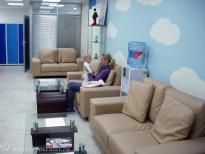
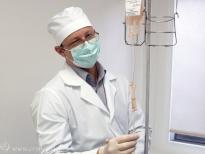
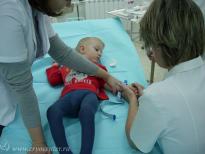
CryoCenter – Center for Regenerative Medicine offers a new therapeutic approach to the treatment and rehabilitation of patients with cerebral palsy and traumatic brain injuries
As a result of experimental and clinical investigations organized by Stem Cell Bank “CryoCenter” and carried out in leading clinical institutions of Moscow and Saint-Petersburg, a new approach to the treatment and rehabilitation of patients suffering from various neurological disorders was developed. This new method is based on the use of minimally manipulated cord blood cells, which combine the potential of “adult” stem cells, biological adolescence and confirmed safety of clinical application.
CryoCenter’s Collaborators
- National Cardiology Research Center of the Russian Ministry of Healthcare and Social Development, Moscow
- Federal State Institution “Kulakov Research Center for Obstetrics, Gynecology and Perinatology” of the Russian Ministry of Healthcare and Social Development, Moscow
- Mental Health Research Institute of the Russian Academy of Medical Sciences, Moscow
- Institute of Human Brain of the Russian Academy of Sciences, St.-Petersburg
- Polenov Institute of Neurosurgery, St.-Petersburg
- Federal State Research Center “Institute for Biomedical Problems” of the Russian Academy of Sciences, Moscow
- Burdenko Main Military Clinical Hospital, Moscow
- Clinical and Research Institute of Emergency Children’s Surgery and Trauma, Moscow
- Almazov Federal Heart, Blood and Endocrinology Centre, St.-Petersburg
Therapeutic cell product
For cell therapy, we use a suspension of allogeneic (collected from healthy donors) viable nucleated cord blood cells compatible with the patient’s blood. All related procedures of cell separation, characterisation, cryogenic storage, as well as the preparation of the treatment dose, are performed in CryoCenter’s own State-of-the-Art Laboratory. During the manufacturing process, each cord blood sample is tested for human immunodeficiency virus (HIV-1/2), hepatitis B and C, human T-lymphotropic virus (HTLV-1/2), herpes simplex virus (HSV-1/2), cytomegalovirus and syphilis, characterised by blood group and rhesus-factor, nucleated and CD34-positive cell count and sterility. Subsequently, cells approved for clinical use are stored in liquid nitrogen until used.
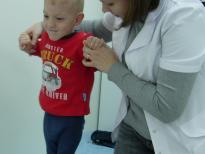
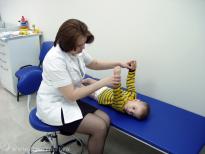
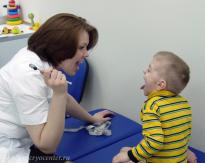
Is this method of treatment approved for clinical use?
Yes, the medical technology “Use of cord blood nucleated cells in the treatment and rehabilitation of patients with neurodegenerative diseases, traumatic and perinatal brain injuries” was approved by Federal Service on Surveillance in Healthcare and Social Development (Roszdravnadzor).
What are advantages of cord blood cells comparing to other cell types?
Compared to various cell types isolated from other human tissues, cord blood cells:
- DO NOT need additional reproduction in quantity (cultivation) to provide a “therapeutic dose”;
- DO NOT possess inherent malign transformation ability (potential formation of tumors);
- ARE NOT carrying acquired genetic abnormalities since samples are collected during the first minutes after birth;
- ARE FREE of moral, ethical, religious and other limitations peculiar to embryonic cells;
- HAVE BEEN USED in the therapy of life-threatening conditions over several decades;
- HAVE PROVED their safety and efficacy with thousands of patients worldwide.
Which neurological diseases or pathological conditions may be successfully treated using cord blood cells?
Cell therapy may be effectively applied to several neurological disorders including:
- All clinical forms of cerebral palsy and associated conditions (hyperkinesias, symptomatic epilepsy, compensated hydrocephalus, delayed physical and mental development).
- Traumatic brain disease (consequences of severe brain trauma) resistant to traditional therapy and rehabilitation.
How are cord blood cells introduced to a patient?
A cell suspension is infused intravenously at the average dose of 250 millions of cells in 50-100 ml of plasma-substituting solution. The procedure is painless, safe and takes 20-30 minutes. During this period (and some time after infusion) the patient is under observation by medical specialists.
How many cell infusions the patient should receive for significant therapeutic effect?
To obtain an evident effect we recommend 2-3 procedures at 2-3 week intervals followed by active physical rehabilitation.
In case of need our specialists will recommend a complex of corresponding physical exercises or assign to specialized medical rehabilitation centers.
To consolidate the results, the course of cell therapy should be repeated 3-6 months later.
What results of cell therapy should be expected?
In patients with cerebral palsy:
- reduction of pareses;
- decrease of spasticity and increase of muscular force;
- improvement of motor activity;
- reduction of convulsion frequency and severity;
- restoration of gait;
- appearance or amelioration of self-service skills;
- recovery of vision (in cases with optic nerve degeneration);
- improvement of speech, memory, attention, and intellect.
In patients with traumatic brain disease:
- accelerated restoration of cognitive and “instrumental” cortical functions;
- significant (up to complete) regress of pareses;
- reduction of asthenic syndrome components (fatigability, sleepiness, depression, vegetative dysfunction, emotional lability, etc.);
- improvement of speech (regress of aphasia);
- augmentation of rates and successfulness of functional and neuropsychological test implementation;
- amelioration of mental health.
What place does cell therapy take in many-sided therapy and rehabilitation of patients?
The treatment of every disease, particularly of chronic, is the prolonged and laborious process. Cell therapy symbolizes just one link in this chain. It will do all it can only in conjunction with comprehensive rehabilitation. In case of need our physicians could assist in selection of corresponding physical exercises or assign to specialized medical rehabilitation centers.
Do contra-indications exist for cell therapy application?
Yes. Primary medical consultation, determination of indications and contra-indications for cell therapy are provided free of charge using E-mail and Skype.
Where in Russia is cell therapy using cord blood cells accessible?
The complete spectrum of medical care, including check-up, doctor’s consultation and cell infusion is available at:
“CryoCenter” – Center for regenerative medicine
National Center for Obstetrics, Gynecology and Perinatology,
Akademika Oparina Str., 4, Moscow, Russian Federation
